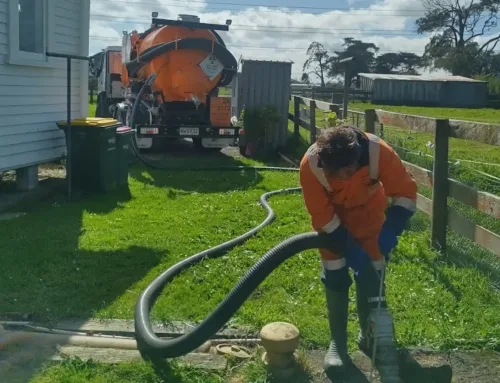Some Known Incorrect Statements About Reclaim Waste
Some Known Incorrect Statements About Reclaim Waste
Blog Article
The Greatest Guide To Reclaim Waste
Table of Contents3 Easy Facts About Reclaim Waste ExplainedEverything about Reclaim WasteThe Ultimate Guide To Reclaim WasteWhat Does Reclaim Waste Mean?The Only Guide for Reclaim Waste
Check out the kinds, events, and forms of fluid waste. Domestic sewer waste describes the waste and products from a household septic tank. This kind of waste is created by people in residences, institutions, and various other structures. This only includes sewage-disposal tanks that have a drainpipe field. The appropriate monitoring and disposal of domestic sewer waste call for liquid waste to be transferred to a sewage treatment plant where the appropriate methods and equipment are related to cleanse and dispose of waste.
Business waste commonly consists of possible hazards, such as combustible products or a blend of fluid and solid waste products, and calls for a more innovative and in-depth disposal process. The disposal of commercial waste commonly involves the filtering of waste before transportation to guarantee secure and proper disposal. Industrial waste is created from by-products and runoff of industrial processes and manufacturing.
This type of waste can not use the exact same sewer management transport or processes as septic or industrial fluids. The industrial waste administration procedure needs the assessment and testing of liquid waste prior to it undertakes the disposal process (liquid waste disposal). Runoff waste is the fluid waste that comes from drainage and excess stormwater in highly populated locations or cities
Runoff waste can create contamination and flooding otherwise handled correctly. Learn a lot more regarding sewage system cleansing and waste administration. Ensuring correct waste management can avoid calamities and decrease environmental damage. Both people in domestic settings and experts in industrial or production industries can benefit from comprehending the procedures and policies of liquid waste monitoring.
Reclaim Waste for Dummies
Call PROS Providers today to find out concerning our waste management and disposal solutions and the proper ways to take care of the liquid waste you create.
(https://www.huntingnet.com/forum/members/reclaimwaste1.html)This supposed 'wastewater' is not just an important source however, after therapy, will certainly be released to our land, rivers or the ocean. Made use of water from bathrooms, showers, baths, kitchen sinks, laundries and industrial procedures is recognized as wastewater.

water made use of to cool machinery or tidy plant and tools). Stormwater, a form of wastewater, is overflow that streams from farming and metropolitan locations such as roof coverings, parks, yards, roadways, courses and seamless gutters into stormwater drains, after rainfall. Stormwater moves untreated straight to local creeks or rivers, at some point reaching the ocean.
Reclaim Waste - Truths
In Queensland, many wastewater is treated at sewage treatment plants. Wastewater is carried from residential or industrial sites through a system of drains and pump terminals, called sewerage reticulation, to a sewage treatment plant. City governments build, maintain and operate most sewer treatment plants. Operators are accredited under the Environmental Protection Act 1994 to discharge treated wastewater at an appropriate environmental standard right into rivers.
The Department of Natural Resources recommends neighborhood federal governments about handling, operating and keeping sewerage systems and treatment plants. In unsewered areas, city governments might call for householders to install specific or household sewer therapy systems to treat domestic wastewater from commodes, kitchen areas, washrooms and laundries. The Department of Natural Resources authorizes the use of family systems when they are confirmed to be reliable.
Most stormwater obtains no treatment. In some new neighborhoods, treatment of some stormwater to get rid of trash, sand and gravel has started making use of gross contaminant catches. Wastewater therapy happens in four stages: Gets rid of solid matter. Bigger solids, such as plastics and various other things incorrectly released to sewage systems, are gotten rid of when wastewater is travelled through displays.
Wastewater after that moves into big storage tanks where solids work out and are removed as sludge. Grease and residue are skimmed from the surface. Makes use of small living microorganisms referred to as micro-organisms to damage down and get rid of continuing to be liquified wastes and great fragments. Micro-organisms and wastes are incorporated in the sludge. Gets rid of nitrogen and phosphorus nutrients that can cause algal blooms in our rivers and intimidate water life.
The Single Strategy To Use For Reclaim Waste
Nutrient removal is not available in any way sewer therapy plants since it needs pricey like this specialised tools. It is coming to be much more typical in Queensland. Clear fluid effluent created after therapy may still contain disease-causing micro-organisms. If this effluent is launched right into rivers such as rivers or the sea, the micro-organisms will ultimately die out.

A lot of wastewater flows right into the sewage system. Under the Act, local federal governments provide authorizations and licences for eco appropriate tasks (Ages) involving wastewater releases that could have a regional effect.
Reclaim Waste - The Facts
Otherwise, examples are considered laboratory evaluation. Commonly many tests are needed to establish the degrees of each of the various contaminants such as oils, hefty metals and pesticides in water. Tracking gives factual information regarding water high quality and can confirm that licence conditions are being satisfied. The info obtained with monitoring offers the basis for making water high quality choices.
Report this page